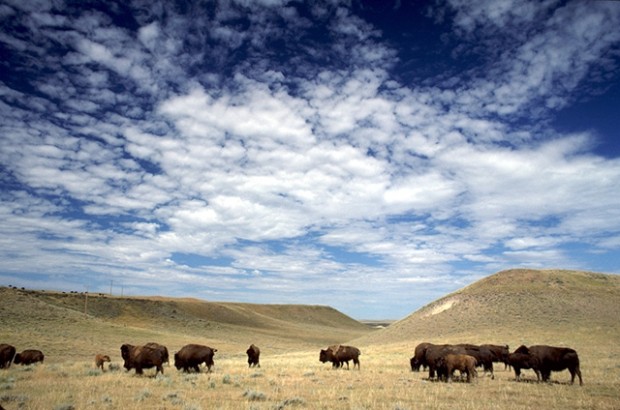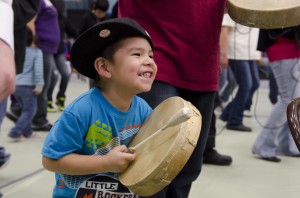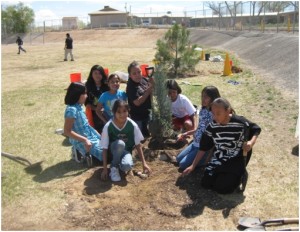We have much more to do and your continued support is needed now more than ever.
Native American Heritage Month: Celebrating Tribal Victories in Conservation

Many of the foods we eat and the medicines and remedies we use were introduced by Indians and more than one highway follows an Indian trail. Indians make contributions in every area of endeavor and American life, and our literature and all our arts draw upon Indian themes and wisdom. Countless American Indians have served in our Armed Forces and have fought valiantly for our country. President Ronald Reagan, Proclamation of American Indian Week, 1986.
There are over 5.2 million American Indians and Alaska Natives in the U.S. The 566 federally-recognized, sovereign tribal nations own and manage over 95 million acres of land – 11 million acres more than the National Park Service (to read more notable statistics for American Indians and Alaska Natives, visit the U.S. Census Bureau).
This month, NWF’s Tribal Partnerships Program is highlighting the important contributions Native peoples have made to conservation. Native Americans are our nation’s original environmental stewards. Tribes have been caring for and nurturing Mother Earth for thousands of years. Because Tribes have the longest continual experience with the land, climate, wildlife and other natural resources, they have significant expertise and play an important role in helping us solve today’s conservation challenges.
Since the mid-1980s, NWF has partnered with tribes because we share a common value – to protect wildlife and habitat. This year, the theme of Native American Heritage Month is “Serving Our People, Serving our Nations: Native Visions for Future Generations.” In keeping with this theme – as well as NWF’s mission to “inspire Americans to protect wildlife for our children’s future” – we thank our tribal partners for major conservation successes in 2012. Each story is a win not only for tribes, but for all Americans, and is guaranteed to benefit generations to come.

Stopping the Keystone XL oil pipeline. In December 2011, Tribal leaders met with federal agencies and members of Congress to voice their opposition to the Keystone XL oil pipeline, a massive project intended to carry oil sands from Alberta to Texas. Tribes object to the massive destruction and pollution caused by oil sands development, fear that a pipeline spill will harm tribal health, safety, and environment, and criticize the State Department’s failure to engage tribes in the permitting process. In large part due to the efforts of tribes, President Obama put the project on hold in February 2012, citing inadequate environmental review.
 Tribal Schools Receive Awards from NWF’s Eco-Schools USA Program. This year, the STAR School in Leupp, AZ – on the Navajo Reservation – received an Eco-Schools Bronze Award from NWF as well as a Green Ribbon School award from the U.S. Department of Education. Several Navajo elementary schools – Mesa Elementary in Shiprock, Chee Dodge in Yatahey and Navajo Elementary in Navajo –are in various stages of completing the Eco-Schools Bronze award. In addition, Tohatchi High School in Tohatchi, NM became an officially registered Eco-School.
Tribal Schools Receive Awards from NWF’s Eco-Schools USA Program. This year, the STAR School in Leupp, AZ – on the Navajo Reservation – received an Eco-Schools Bronze Award from NWF as well as a Green Ribbon School award from the U.S. Department of Education. Several Navajo elementary schools – Mesa Elementary in Shiprock, Chee Dodge in Yatahey and Navajo Elementary in Navajo –are in various stages of completing the Eco-Schools Bronze award. In addition, Tohatchi High School in Tohatchi, NM became an officially registered Eco-School.
Fighting Reckless Energy Development in the Powder River Basin. The Powder River Basin is the most active area in the country for coal mining and coal bed methane development. NWF works with Tribal members from across the Northern Plains who have long-standing historical and cultural ties to the Powder River Basin landscape. We are working to create a Carbon Trust, which would provide economic incentives for the Northern Cheyenne Tribe to keep its coal in the ground and preserve its pristine habitat of grass-covered plains and rolling hills. Currently, we are rallying with Tribal members and local landowners to fight the proposed Tongue River Railroad. Stopping this new spur line will inhibit the development of new coal mines in southern Montana and the export of U.S. coal to Asian markets, which will in turn protect wildlife habitat, historic and cultural resources, and clean air and water.
The National Wildlife Federation is honored to partner with tribes on wildlife conservation. Please join us in thanking them for inspiring us “to protect wildlife for our children’s future.”
Please visit our Tribal Partnerships Program, learn more about what we do, and join us in protecting wildlife and habitat on tribal lands.





















